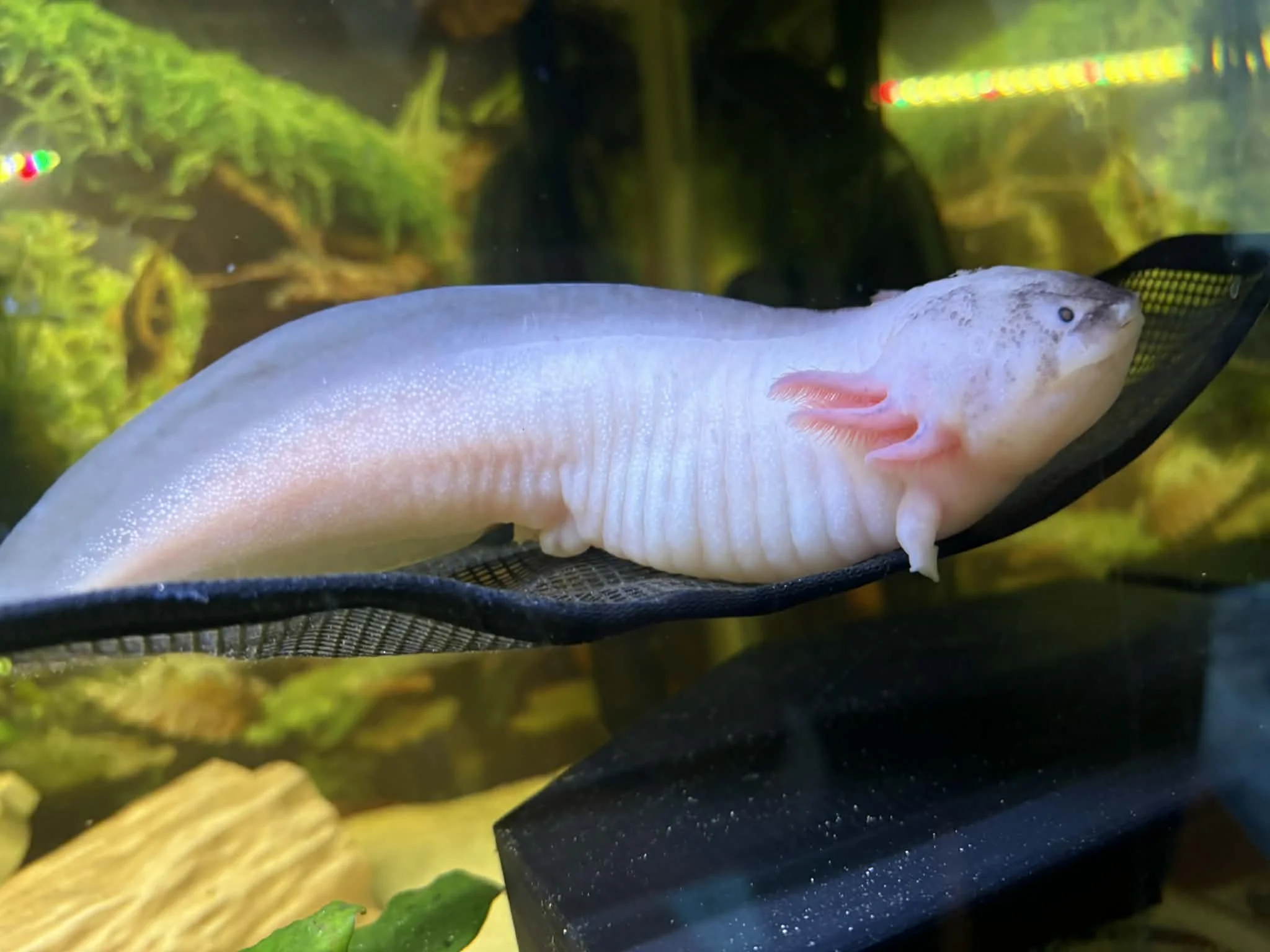
Short Toe Syndrome in Axolotls — Causes, Signs, and Rescue Guidance
A clear, compassionate guide to Short Toe Syndrome in axolotls, covering causes, common signs (shortened toes, limb malformations, loss of limb regeneration), associated urogenital and renal problems, and rescue policies including non‑breeding recommendations and humane care options. The post emphasizes veterinary consultation, quality‑of‑life decisions, and how rescues handle intake and euthanasia when necessary

Worms for Axolotls: Nutrition, Care, and DIY Farms
Worms aren’t just squirmy critters—they’re one of the healthiest staple foods for axolotls! This guide explores the top worm types, their nutritional breakdowns, and step-by-step instructions for creating a DIY worm farm to ensure a steady, sustainable food supply for your lotls.

Give a Little, Save a Lotl: Why Giving Tuesday Matters for Libertyland
Giving Tuesday isn’t just another fundraising day—it’s a lifeline for Libertyland Axolotl Rescue. This post explores how donor generosity powers medical care, adoption programs, and sustainable rescue operations, showing that every gift, no matter the size, helps save a lotl.

🐟 Maddie’s Healing Journey: A Story of Hope and Resilience
Maddie’s journey isn’t over, but her healing is underway. From a life-threatening condition to a delicate surgery, this post shares her story in photos — and the hope that fuels every step forward.

Choosing the Right Aquarium Size for Your Axolotl: Pros, Cons & Footprint Tips
Discover why aquarium size matters for your axolotl’s health, happiness, and longevity. This guide explores the pros and cons of different tank sizes and footprints — from compact 20‑gallon setups to spacious displays — with science‑backed tips to create a safe, enriching, and beautiful home for these extraordinary amphibians.

Sapphire’s Fight: How You Can Help Save a Remarkable Axolotl 💙
Sapphire’s journey is one of love, resilience, and urgent medical care. After enduring three painful prolapses, this remarkable axolotl now has a second chance at life through LibertyLand’s expert rescue team. Learn her story, why prolapse is so dangerous, and how you can help her heal.

Why the Axolotl Pancreas Could Transform Diabetes Research
LibertyLand Axolotl Rescue blends science, conservation, and community outreach to share the fascinating biology of axolotls. From regenerative breakthroughs to cultural history, we create engaging, accessible resources that inspire curiosity and protect this endangered species.

A Brief History of the Axolotl: From Aztec Legend to Scientific Marvel
Journey through the remarkable history of the axolotl — from its sacred place in Aztec mythology and unique life in Mexico’s highland lakes, to its starring role in groundbreaking regeneration research. Discover how this “walking fish” became both a cultural icon and a critically endangered species, and why protecting its last wild refuges is more urgent than ever.

The Proper Way to Set Up an Axolotl Tank: A Step‑by‑Step Guide
Setting up an axolotl tank isn’t just about looks — it’s about creating a safe, stable home where your axolotl can thrive for years. This step‑by‑step guide walks you through everything from choosing the right tank size and substrate to cycling, filtration, hides, and acclimation. Along the way, we bust common myths and share pro tips to help you avoid costly mistakes and keep your axolotl healthy and stress‑free.

Why a Giant Axolotl Stole the Show at Burning Man 2025
This year’s Burning Man saw more than just dust storms and neon lights — it witnessed a cultural milestone. Mexico’s ¡AXOLOTL! collective, famous for its glowing axolotl art car, debuted Kauyumari, a 6.5‑meter sacred deer created by 50 artists, including 18 Wixárika artisans. Steeped in Indigenous symbolism and hand‑embellished with intricate bead and yarn work, the installation offered a glowing ceremonial space in the heart of the playa — and a vision for its life beyond the desert.